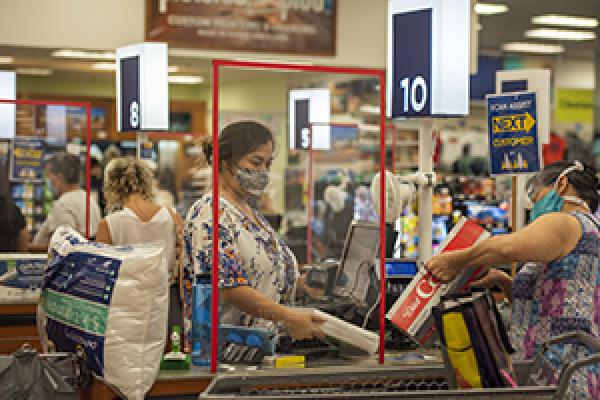Weinberg's research finds state response had little economic harm

Recently, nights have gotten a little longer for Bruce Weinberg.
“I feel like — if it’s getting a little bit late at night and I’m tired and teetering on the edge of turning in or putting in an extra hour of work —I should probably stay up that extra hour and try to get this paper out,” he said. “Because this is something someone could be using.”
Weinberg, a professor in the Department of Economics, has always known local and national policymakers value economics research. But now, in the age of COVID-19 and the new ways it influences our lives, that connection has become more immediate, direct and critical.
And as unemployment numbers in Ohio and around the U.S. climb due to the effects of the pandemic, economists are scrambling to learn the causes of the spikes and examine who is being impacted the most to give government agencies and lawmakers a comprehensive picture of the economic landscape.
The states are turning to their major research universities and saying, ‘Y’all are the best experts we’ve got,’” Weinberg said. “From that perspective, it makes me feel like the stuff we’re doing really has an impact.”
A pair of recently released studies funded by the Office of Research’s COVID-19 Seed Funding program help paint a clearer image of the labor market slowdown. Weinberg recently examined the responsive actions of state governments and compared them to the historically unprecedented rises in unemployment insurance claims across the country. Using nationwide school closures as a metric, Weinberg and study co-author Xuan Jiang, a postdoctoral researcher in economics, found that state governments’ regulations and guidelines to curb the spread of COVID-19 had little impact on rises in unemployment.
Instead, the research surmises that the labor market was slowed primarily because of the pandemic itself and the national and international response to it.
“What’s happening is because of an overall economy-wide shock and not the decisions of specific states to enact a certain set of social distancing policies,” Weinberg said. “So if I’m Gov. [Mike] DeWine and I’m trying to decide how much social distancing we want to go for, the reality is choosing a stronger form of social distancing is unlikely to dramatically increase the unemployment insurance claims in Ohio.”

Another study used monthly data from the federal government’s Current Population Survey to explore the economic toll suffered demographically. The study showed greater job losses among Hispanic workers, workers between the ages of 20 and 24, women, workers with large families and workers with less education. Weinberg and Jiang also discovered unemployment was greater among those in occupations requiring more face-to-face contact and that couldn’t be performed remotely.
In the long term, Weinberg is drawing parallels between health crises caused by COVID-19 and opioids to examine how the economic consequences of the pandemic feeds back into public health issues, how the spread of the coronavirus is influenced by social and geographic factors, how to accurately measure the rate of contagion and how various policies affect incidences of public health problems.
“A lot of health problems share a common set of features,” Weinberg said. “One we’re very interested in is the opioid epidemic. … That’s a second, broader (study) that I think is going to take some more time for us.”
Diving into a new era of public health that necessitates rapid-response research requires an all-hands-on-deck approach, and for Weinberg, there has been no shortage of opportunities to connect with other researchers to find answers to an ever-increasing array of questions.
“The comprehensiveness of Ohio State means that we have the ability to make these kinds of connections and come at things from a very wide range of angles and mount that kind of comprehensive response,” Weinberg said. “Whatever it is you need, there are probably multiple people doing it at Ohio State, and they’re doing it well and interested in working together.”
